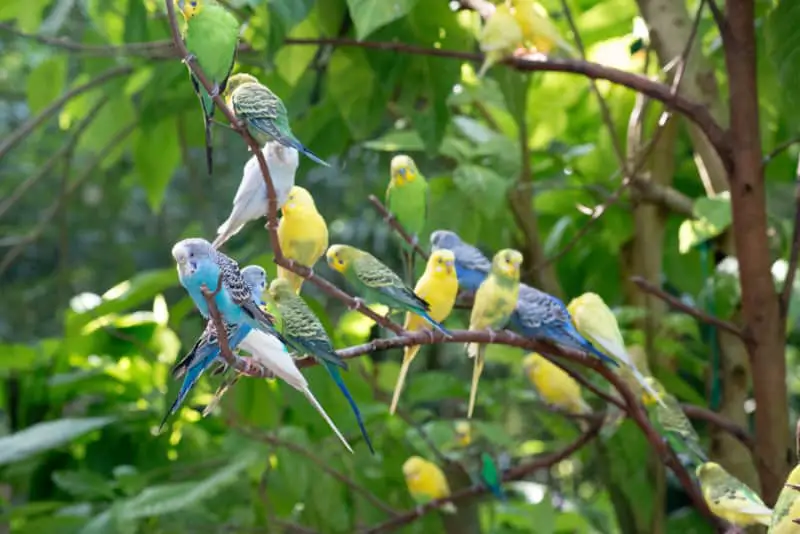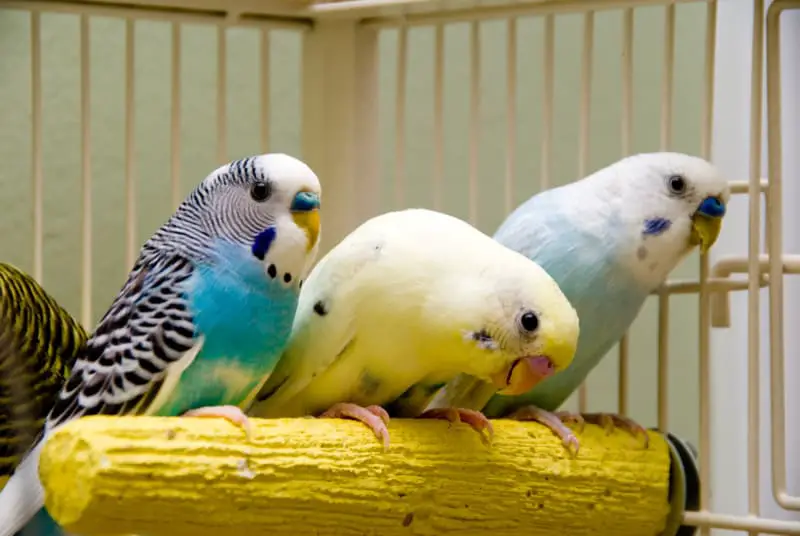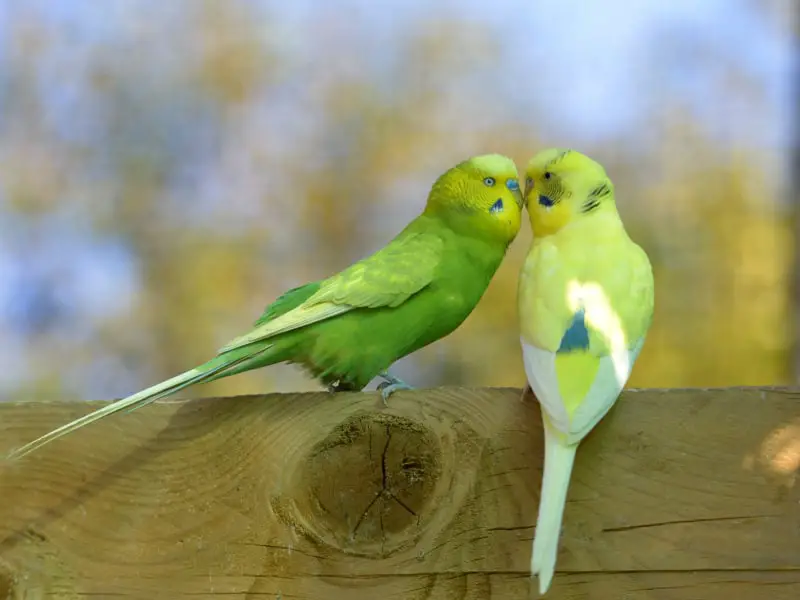Have you ever wondered how many color options parrots can have? These birds are always bright and colorful in the wild and in our homes. With their colors, they bring joy and fun to the lives of their owners. What colors can parakeets have? What is the rarest parakeet color?
The rarest color for parakeets is a dark charcoal gray called anthracite. They also have such rare colors as lacewing, rainbow, and clearwing shades. These colors are the result of rare genetic mutations in birds, but some mutations appear more often, so the color may become more popular.

You can find parakeets in almost any color, so sometimes, it’s hard to guess which color is the most unique. However, you should know that all bird colors are the result of genetic mutations – frequent or rare. Therefore, breeders can make some shades more common.
Let’s discuss all the details. How do different colors develop in parakeets? How do these genetic mutations occur? What are the most popular and rarest parakeet colors? Find out all the answers in our article!
What Can Parakeets Eat? Full Diet Review
What Are the Most Common Colors for Parakeets?
Parakeets living in captivity have two primary colors. These are shades based on white or yellow tones. Yellow-based includes all green options, from light green with a hint of yellow to dark green. Green can be called the original color of parakeets because it is laid down by nature so that they can hide in the trees. Regardless of the shade of green, all green parakeets have similar color features. These can be blue tail feathers, yellow stripes, a yellow head, or blue cheeks. Green parakeets are more widely distributed because it is the dominant color.
The white-basic shades of the parakeets color have all light shades. Usually, it is white, with all shades of gray, blue, and purple. The blue color of parakeets is also very common. However, it is more difficult to obtain because the blue color gene is not dominant. Blue parakeets can vary in shade from pale blue to bright blue. Blue parakeets, like green parakeets, share common visual features – blue stripes of various shades, blue spots, a white head, and purple cheeks.
What Are Some of the Less Common Colors?
Purple parakeets are rarer than blue or green parakeets. The fact is that the purple gene is semi-dominant. Now breeders are increasingly getting chicks of all purple shades, but such parakeets are still quite rare. They have rich purple shades and dark cheek markings, black tint on their tail feathers, and white trim.
In addition to beautiful purple shades, there are also dark anthracite parakeets. This mutation is considered one of the rarest and is mostly found in Germany. If you want to get such a parakeet, then you will most likely have to import them.
Another variety of rare parakeet colors are parrots with a dark or black face and white markings. Such parakeets were first bred in the Netherlands in the 1990s. They have a black head, black face, and beautiful white markings.

Are Male and Female Parakeets Usually Different Colors?
The color of all parakeets is the result of genetic selection and not their gender. Gender does not affect the color of parrots. However, it can help you determine the gender of a parakeet. It’s very easy to do. But this method only works if you have an adult parrot over one year old.
In order to determine the gender of a parakeet, you need to examine their cere. This is a thin band of raised skin above the parrot’s nostrils. Females have a light cere – light brown, white, or light blue. Male parakeets have bright purple, pink or blue cere.
Also, the brightness of the color of parakeets in the wild depends on their gender. Males usually have brighter feathers than females. However, this does not apply to domestic parrots because breeders make their color as bright as possible, regardless of gender.
Will Parakeets Change Color as They Age?
Yes, parakeets can change their shade throughout their lives. Sometimes it can even change their whole color and appearance. They can add shades, become brighter, or even change the basic color a little. The most dramatic changes occur during the first molt. For example, if you have a golden-faced budgerigar, they may get golden spots all over their bodies during their molt.
Also, the color of parrots can vary depending on their age. In older parrots, the color may become paler over time. However, each bird ages in its own way, and it is difficult to predict how the color of your parakeet will change. For example, they may become more spotted and less bright.

How Do I Breed Parakeets for a Specific Color?
In order to get a certain color or shade of parakeets, it is necessary to understand the basic principles of genetics and the formation of genes. The appearance of certain colors is associated with genetic mutations. Therefore, you need to be aware of the recessive and dominant genes and how they shape the color of parakeets. Selecting a male and female to mate with is the most important step in which you must plan the color you want.
For example, if you want to get white chicks, then you need to have a white male and a white female because this is a recessive gene. You also need to consider the dark shade factor when breeding. For example, if you breed two dark green parakeets, you are more likely to get dark green chicks. If you breed a dark green parrot with a light green one, you are more likely to get dark green chicks.
Do Parrots Beaks Change Color?
Conclusion
The nature and behavior of your pet do not depend on their color. Color is just a curious factor that people like to explore in their parakeets. So, we have found out that the rarest color of parakeets is dark anthracite gray. Rare colors are the result of rare genetic mutations. However, in the future, they may become more common as breeders try to get these colors more often.


